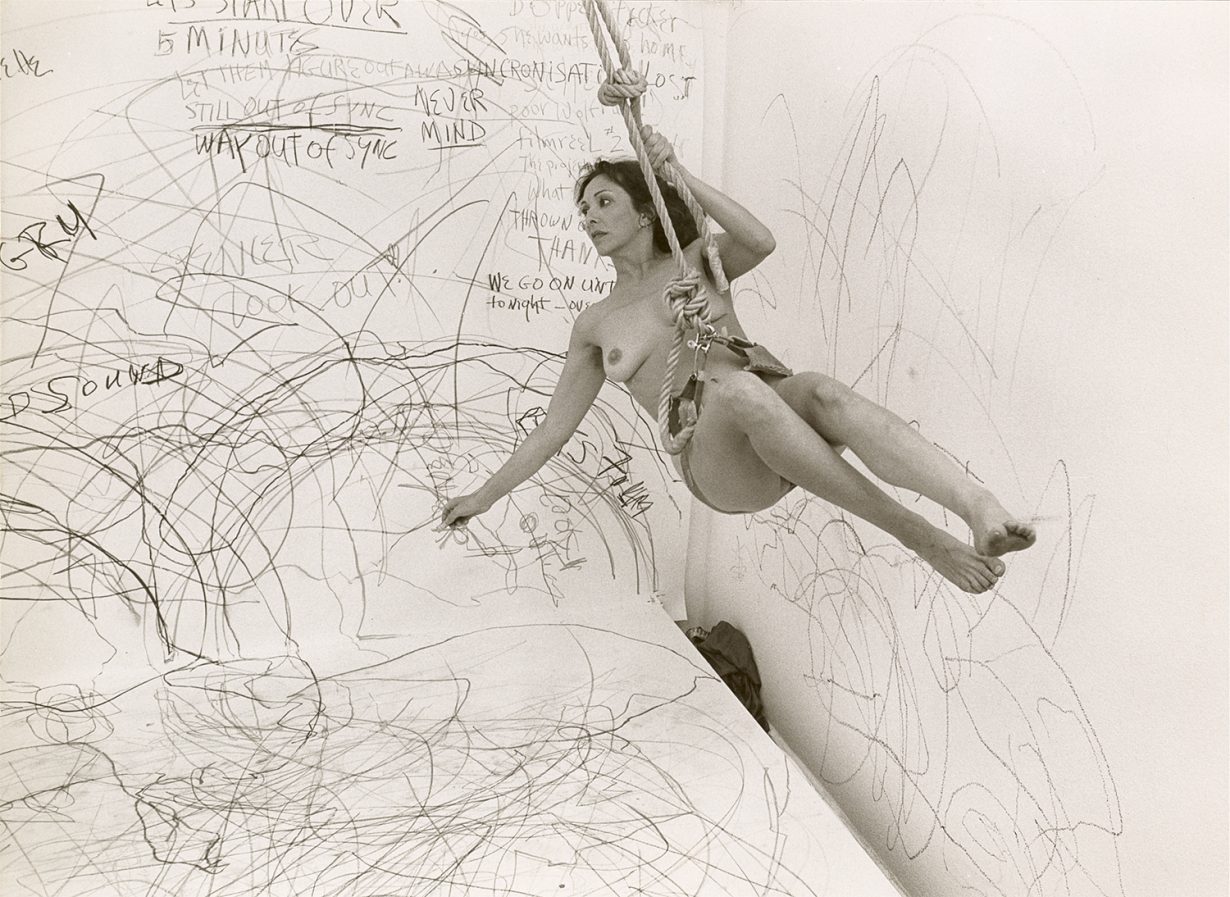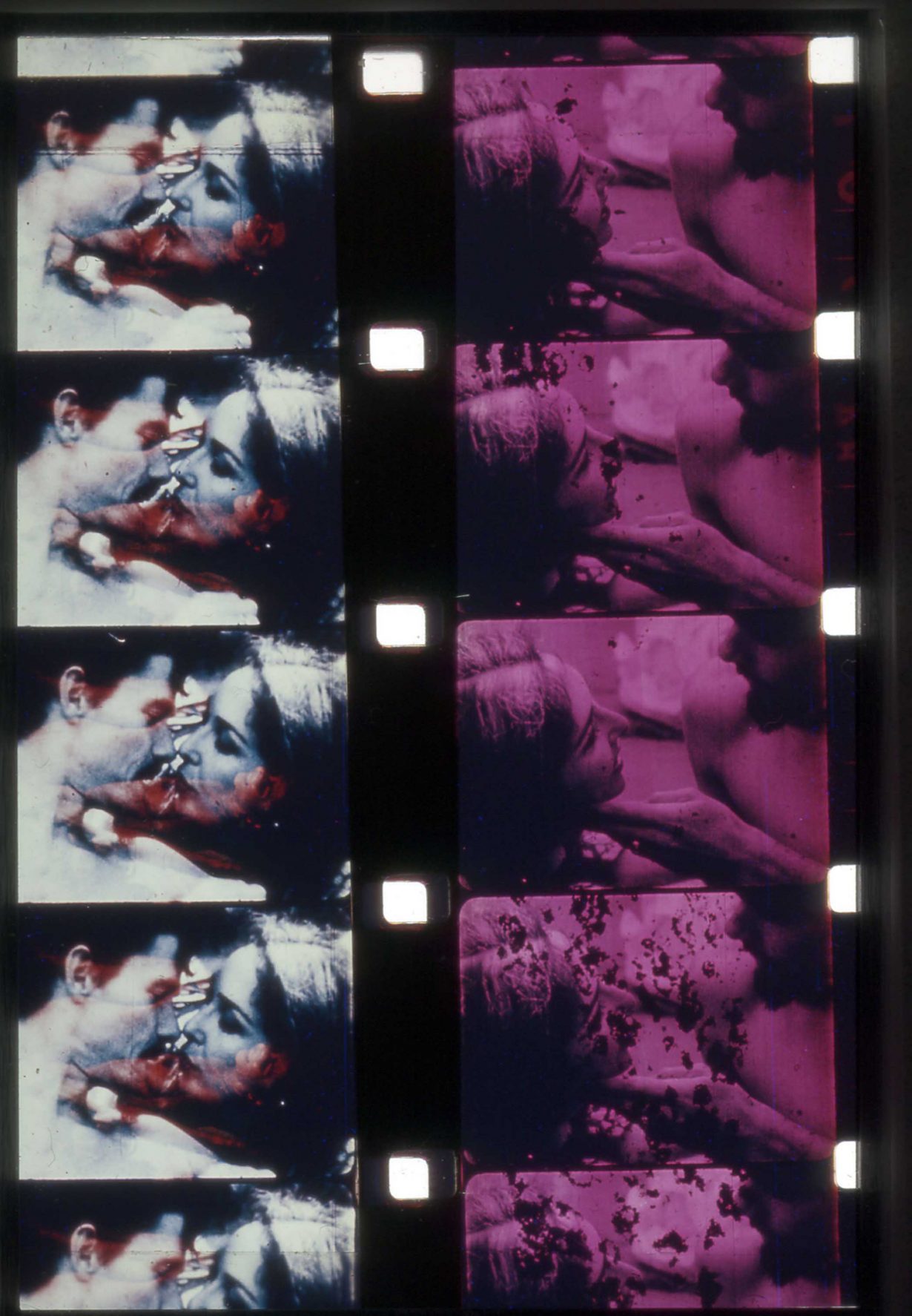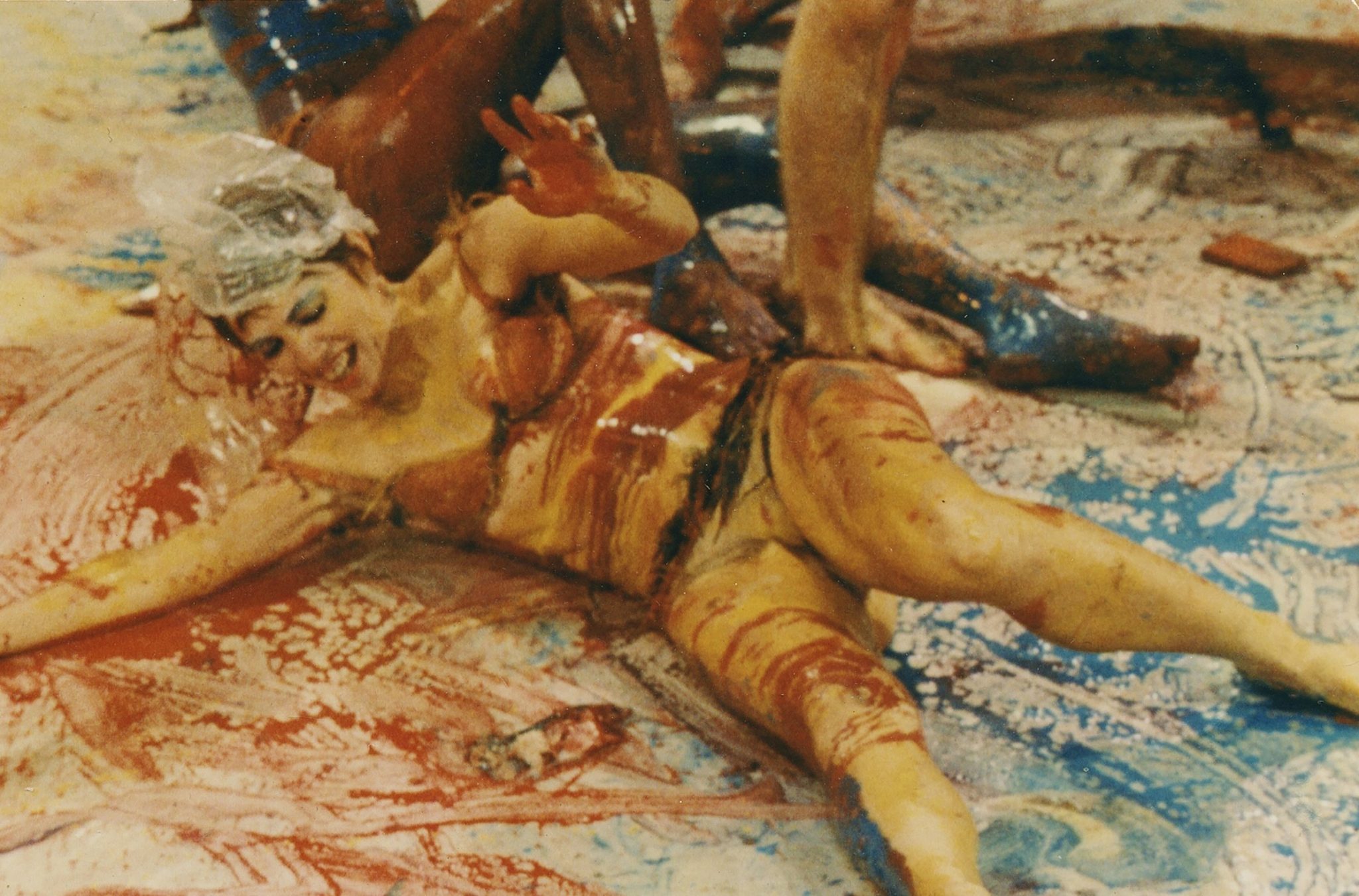One of her greatest, most enduring skills was the ability to take the female body, as pure flesh, and to transform it into something powerful and illuminating rather than demeaning or depressing
I will never forget my introduction to Carolee Schneemann’s Meat Joy (1964), in part because it came hand-in-hand with my very first encounter with Paul Verhoeven’s Showgirls (1995) – at art school, an especially perceptive tutor recommended both works to me as objects worthy of study for a practitioner who, at that particular time, was especially interested in provocative and unnerving images of female nudity and sexuality. Meat Joy, in case you are not familiar with it, is a choreographed performance work, in which dancers of both genders end up writhing and gyrating with each other, naked, doused in paint and covered in meat; Verhoeven’s film, as I assume you know already, is an ‘erotic’ ‘drama’ about showgirls in Las Vegas. At first blush, the pairing seemed absurd: Schneemann was a serious artist, and Verhoeven’s film still had, in the late noughties, something of a reputation for being a high-camp, brainless bomb. Still, look closer, and the two have more in common than one might think. Both works, using gorgeous exposed bodies as their primary medium, are at once hot and comical and nasty, compelling like watching sex and also compelling like watching atrocity footage on the news, funny ha-ha and also funny-peculiar; they seduce and then appal, and they have a history of irritating male audience members through their failure to present a conventional enough version of sex to facilitate masturbation.

What that tutor wanted me to see, I realise now, was the full potential of the naked female body as a medium for transgression, for perversion, and for confrontation. I have not produced a single thing that might reasonably be called an ‘artwork’ in a little over a decade, but I cannot overemphasise how often I have thought about Meat Joy in years since, or how frequently its startling vision of the body as a site of simultaneous pleasure, humour and disgustingness has crept in some form or another into something I have written. Even the phrase ‘meat joy,’ an effective synonym for sex itself, is a stroke of macabre genius. One of Schneemann’s greatest, most enduring skills was her ability to take the status of the human body, and the female body in particular, as pure flesh, and to transform that status into something powerful and illuminating rather than demeaning or depressing. At Body Politics (2022), a retrospective of her work that has just opened at London’s Barbican, I sat and watched Meat Joy in a gallery setting for the first time, and I noted that it still retained its initial ability to overwhelm – its reds and fleshy pinks and blues are somehow less suggestive of pornography than of the clips of vehicular crashes that appear in early drivers’ education videos, and the visual confusion created by the perpetual collision of so many naked bodies with so much raw meat is funny and alarming. It is oddly sexy, too, and its participants are laughing, unselfconscious, the ‘joy’ of the title bursting through in waves.

Funny, sexy and alarming, as a holy trinity, was Schneemann’s thing: she was beautiful and fearless and fully embodied and truly, righteously angry, and she also maintained a life-long fondness for wordplay. (When we exchanged emails after an interview many years ago, she filled in the subject line with ‘Snow to Snow,’ a charming joke about the etymology of ‘Schneemann.’) Walk around Body Politics, and I guarantee that you will laugh as well as marvel, and that even if some of the pieces now feel dated in their themes – Blood Work Diary (1972), for instance, in which Schneemann documents her menstrual cycle – others will feel more electrifying than a great deal of actually contemporary feminist work. That her best-known pieces tend to involve her nakedness is, naturally, a consequence of the enduring popularity of images of thin white women with no clothes on in the artworld and beyond; it is also a result of these being some of her most interesting and challenging material, her body’s suitedness to media coverage and the male gaze being the point. ‘Hostile feminists,’ Chris Kraus once wrote about the climate of the artworld in the 1970s, ‘saw any female self-display as patriarchal putty […] As if the only possible reason for a woman to publicly reveal herself could be self-therapeutic. As if the point was not to reveal the circumstances of one’s own objectification.’ Schneemann often used her body like a Trojan horse—think of Interior Scroll (1975), where she appeared nude before an audience before drawing a text, tightly-rolled into a cylinder, from her vagina. “I don’t take the advice of men who only talk to themselves,” she read aloud. “Pay attention to critical and practical film language – it exists for and in only one gender.” In pulling the material from inside herself, she literalised the idea that every woman, even one who stands before an audience naked, has an interior life, and an interior monologue that might be vituperative and critical even when her exterior looks alluring. ‘I do not ‘show’ my naked body,’ she wrote, irritably, to a friend: ‘I AM BEING MY BODY.’

Schneemann’s relationship with her own embodiment helps to explain her infatuation with the discipline of dance, a medium that requires the practitioner’s full connection with, and surrender to, both the possibilities and the limitations of the physical self. Always, she preferred to describe herself as a painter and not a performer, and her connection to painting was a physical one, too – sometimes literally, as when she suspended herself naked in a harness for 1973’s drawing piece Up to and Including Her Limits, and sometimes less literally, as in the case of the early-career canvases in Body Politics, many of which are thickly slashed with paint, near-three-dimensional in form. She once said that she hoped to ‘expose…and confront…a social range of current cultural taboos and repressive conventions’ by using her body, and her sexuality, in her work, and rarely has that exposure of taboos and confrontation of repression been more evident than in Fuses (1967), a 22-minute film that documents the act of sex through a scrim of scratches, acid burns, and other material degradation. One of the great thrills of pornography, aside from the obvious, is what the critic Sarah Nicole Prickett once described as ‘the pleasure of watching extremely competent people do their jobs.’ Fuses, being a record of Schneemann’s sexual life with her then-partner, has nothing to do with competence or professionalism, and it makes it obvious to the viewer how unusual it is for us to actually see people in love fucking each other. This, and not the act of penetration, is the work’s most extreme, taboo-busting element, and it remains as rare an artefact now in 2022 as it was in 1967.

Later in her career, and later in the retrospective, Schneemann moves from flesh and sex and freedom as a subject to terrorism, death and war, and it’s interesting that her work’s overt femininity, for the most part, decreases commensurate with the presence of violence in the work. Heterosexual sex – viewed as the physical collision of a cis man and cis woman, an exchange or an agreement between a beneficiary of the patriarchy and one of those subjugated by it – is often portrayed in feminist art as a kind of warfare, too. Think of the ‘Relation’ series by Ulay and Marina Abramovic, in which the two run at each other, naked, until both of them are injured, or in which Ulay directs an arrow at Abramovic’s heart, her safety guaranteed only by their ability to hold the bow sufficiently taut – the message, that sex and love between men and women can be dangerous and destructive, is not a particularly happy one, even if it is sometimes delivered in such a way as to be mordantly amusing. Schneemann’s depiction, in Fuses, of a heterosexual sex life genuinely filled with wholly mutual love and pleasure was, and is, a radical proposition, and it is entirely in keeping with her view of female life in general. I said earlier that Meat Joy was ‘at once hot and comical and nasty.’ Isn’t sex, viewed from a distance? Isn’t occupying a woman’s body? Body Politics is, fundamentally, a show about these contradictions, showing that – just as F. Scott Fitzgerald so famously said that the mark of a first-rate intelligence was the ability to hold two duelling ideas simultaneously in the mind – the mark of a truly great feminist artist is a knack for acknowledging that the feminine experience can encompass a hot fuck and an objectifying mindfuck at the same time.
Philippa Snow is the author of Which As You Know Means Violence (Repeater Books UK, Penguin Random House US).
